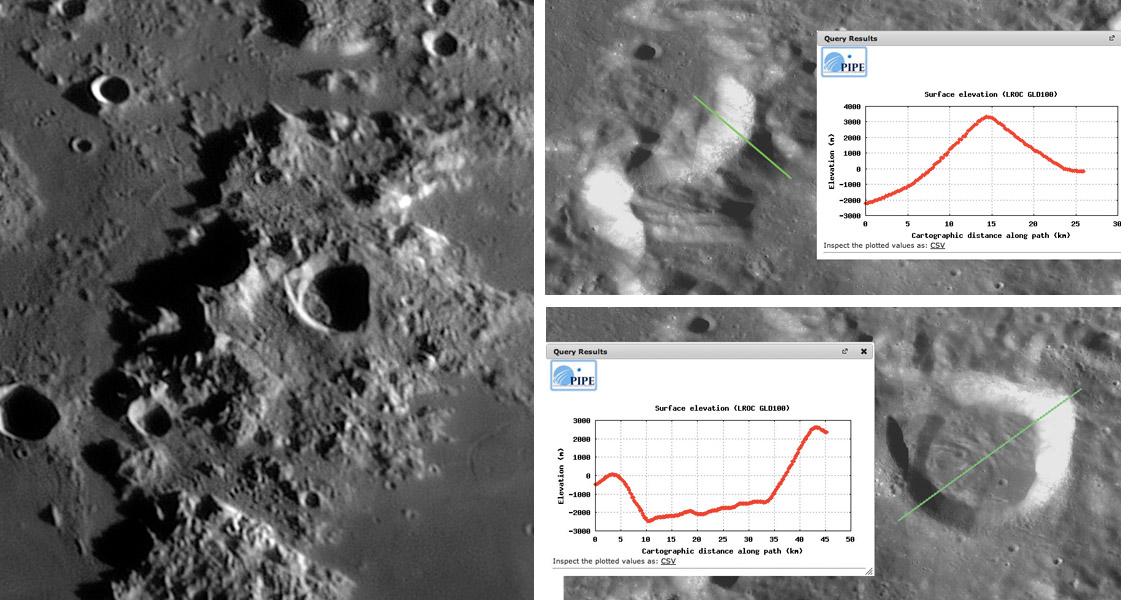February 18, 2013
Slippery Slopes

left image by Peter Rosén and right two from LRO QuickMap
I have reworked at a higher scale an image that I took almost a year ago. This is probably one of the most photographed regions of the Moon so I guess everything has already been said about most of the features. But I like spending some time with the LROC ACT-REACT Quick Map measuring the topography and sometimes the results are amazing. Like the slope of Calippus C that go straight up to 5000 meters. The shape of the slope has some similarities to Mt Fuji but is 1200 meters higher. I climbed to the top of Mt Fuji in 1975 and it is an impressive mountain so I wonder what it feels like to stand at the foot of Calippus C and look up. I am also puzzled by the wrinkles on the crater floor of Calippus, looking like opposing waves. Some of them seem to continue up the crater walls and continue on the outer rim according to the Quick Map.
Peter Rosén
Note by CAW: The origin of Calippus C is uncertain - it seems to be the right side of a crater that has no left side - did it subside into the Imbrium Basin and then get covered by lavas? The slope of the wall isn't as dramatic as it looks because the vertical scale of the QuickMap cross section is exaggerated about 2 times compared to the horizontal scale - the slope is more gentle. The material on the floor of Calippus is probably wall debris that cascaded down from the tall eastern side and also from the western side where a large scallup marks a major wall collapse. An altogether interesting area.
Technical Details: 29 February 2012 at 19h 34m UT. Orion Optics CT 250 f/4.8 with a 2.5x Televue Powermate and a DMK-41AF02. I took a total of 2400 frames.
Related LinksRükl plate 13
21st Century Atlas chart 10.
Yesterday's LPOD: Hemispheric Hole
Tomorrow's LPOD: New Ages for Old Craters
COMMENTS?
Register, Log in, and join in the comments.



